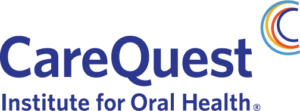The research is clear — oral health is inextricably linked to overall health. The health of our mouth can affect outcomes for heart disease, diabetes, dementia, respiratory illness, and pregnancy complications. Including periodontal treatment in Medicare has the potential to save up to $42 billion annually for patients with diabetes and heart disease. Despite these health and financial benefits, oral health care continues to be siloed from the rest of the health care system. In a nationally representative survey, 63% of US consumers say their primary medical doctor “rarely” or “never” asks about their oral health.
For more than two centuries, dentists have practiced in a fee-for-service reimbursement environment. This kind of system incentivizes performing more — and more complex — procedures, instead of preventing disease and lowering costs. It leaves many people without access to dental care who then seek care in the costly emergency department with costs exceeding $3 billion annually.
There is a growing desire from all stakeholders (government, health care systems, insurers, providers, and patients) to provide high quality, cost-effective, integrated care. Fortunately, in recent years, we have seen dentistry begin to follow medicine in a move toward value-based care (VBC), and we are encouraged by innovative regulations, reimbursement, and processes to that end. Texas, for example, included dental in its efforts to advance value-based payment by introducing a pay-for-quality program in 2012 to improve quality and access to dental care for children. Analysis shows that the VBC alternative payment model (APM) stabilized or lowered spending compared to a fee-for-service model.
“Implementing a system that prioritizes VBC models will take innovation, persistence, and a redesigned oral health care system,” said Rebekah Mathews, Vice President, Health Improvement at CareQuest Institute for Oral Health. CareQuest Institute for Oral Health, a national nonprofit working to create a more accessible, equitable, integrated oral health system, supports and incentivizes medical and dental providers to collaborate on care. Through Community Oral Health Transformation (COrHT) and Medical Oral Expanded (MORE) Care, two initiatives of CareQuest Institute, providers prioritize prevention and whole-person, integrated care. In addition to health improvement programs, CareQuest Institute drives systems change through grantmaking, research, policy and advocacy, and education.
Community Oral Health Transformation (COrHT)
Through COrHT, CareQuest Institute supports safety net dental clinics with the tools and resources they need to incorporate the Three Domain Framework to transform the health of their communities, which focuses on 1) tele-prevention (teledentistry), 2) minimally invasive care (non-surgical treatment of disease), and 3) integration of oral health with overall health care.
In states where the initiative has already been tested, participating clinics are achieving their goals to improve patient outcomes, enhance experiences for both patients and providers, and lower health care costs. In North Carolina for example, CareQuest Institute has partnered with the North Carolina Oral Health Collaborative and Blue Cross and Blue Shield of North Carolina Foundation to form a learning community of safety-net dental clinics to share best practices, build capacity for data collection, and improve population health.
Medical Oral Expanded Care (MORE Care)
MORE Care — another initiative of CareQuest Institute — provides a framework, tools, and guidance for medical providers to integrate oral health competencies and capabilities into the primary care practice, and improve oral health within a community.
In Ohio, through a consensus-building project led by Oral Health Ohio, MORE Care was identified by local stakeholders as a model to advance integrated, value-based care that’s inclusive of oral health. In this pilot program, dental and primary care providers work together on shared goals and comprehensive care for their patients. Participating providers receive financial rewards — performance incentives based on shared goals — allowing simulation of a value-based care model.
VBC Is the Future of Whole-Person Health
Progress is underway, but shifting to a VBC model that includes APMs in dentistry involves a significant transformation in care delivery and financial management. A CareQuest Institute survey revealed that more than half (51%) of oral health providers surveyed had never heard of APMs in dentistry. Clearly, education and outreach will play a critical role in adoption. To shift to value-based care, dental practices will need information technology infrastructure, reporting and analytics, and methods to predict utilization and costs. In addition, we need further testing and piloting of value-based care models in dentistry. Initiatives like COrHT and MORE Care are helping transform the system to prioritize value over volume and make oral health care more accessible and equitable for everyone.
To learn more about strategies to integrate oral health into value-based medical care, contact Rebekah Mathews, Vice President, Health Improvement, CareQuest Institute, at rmathews@carequest.org


